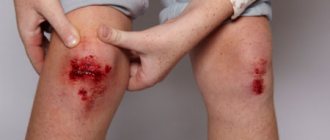Signs of botulism, the etiological factor of which is the anaerobic bacterium Clostridium botulinum, can occur as a result of eating improperly stored homemade food. Symptoms of botulism poisoning primarily include flaccid muscle paralysis. Despite the fact that the disease is recorded much less frequently than other infectious diseases and poisonings, botulism continues to be a pressing problem for human life.
What is botulism
The bacteria Clostridium botulinum is ubiquitous in the soil, however, due to the high demands of microorganisms on conditions for reproduction, the disease rarely occurs in humans. For example, in Moscow, about 15-20 cases of botulism are registered annually, and in Russia as a whole - no more than 200 cases per year.
For rapid sustainable growth of the population of clostridia, which is the causative agent of botulism, the absence of oxygen and a favorable temperature within 30-35 degrees Celsius are necessary. Most often, such an environment is created during home canning in a hermetically sealed jar, salting and smoking. The bacterium multiplies rapidly in the canned product, releasing a toxin abundantly. The higher the number of bacteria in a product, the more botulinum toxin it contains and, accordingly, the higher the risk of poisoning. Bacteria can also multiply in the human intestine; in this case, the disease develops more slowly.
The botulism bacillus Clostridium botulinum exists in two forms - vegetative - capable of reproduction, and spore - extremely resistant to adverse external factors. The vegetative form of the bacterium can withstand contact with sodium chloride solution, acidic environment and spices, but cannot tolerate the presence of oxygen. It can remain viable for several years, but will not withstand 15 minutes of boiling. The spore form of botulism is even more stable: it persists for several decades, can withstand up to 6 hours in boiling water, and can withstand freezing, drying, and exposure to 18% saline solution. The death of clostridia spores occurs after half an hour of autoclaving at a temperature of at least 120 degrees.
Botulism toxin has a fairly high stability: in nature it remains active for up to 118 hours, a high concentration of table salt (18%) does not have an inactivating effect on it. At the same time, the toxin is completely destroyed within 10 minutes when heated to 100 ° C and is inactivated by alkaline solutions (pH higher) and alcoholic beverages.
At the same time, the toxin is completely destroyed within 10 minutes when heated to 100 ° C and is inactivated by alkaline solutions (pH higher) and alcoholic beverages.
Types of disease
Depending on the etiology, botulism can be:
- foodborne - this is the most common type of disease resulting from eating foods contaminated with Clostridium botulinum;
- wound – developing due to contact of the patient’s wound surface with a surface on which bacteria are present;
- children's - developing only in infants in the first six months of life due to parents' violation of hygienic recommendations for child care;
- respiratory - in this case, the pathogen enters the body through the respiratory system in the form of spores sprayed in large quantities into the air (for example, when using bacteriological weapons).
All of the listed varieties, except food ones, are extremely rare. Transmission of botulism from an infected person to a healthy person is impossible.
How to avoid infection
According to the recommendations of Rospotrebnadzor, to prevent botulism you should:
- use only industrially prepared canned food;
- Do not under any circumstances eat canned food with a bulging lid;
- wash vegetables, fruits and mushrooms well from soil particles;
- Do not use vegetable products with signs of spoilage for home canning;
- quickly remove the entrails from caught or purchased fish, wash it well, and then store it in the cold;
- do not preserve, but pickle mushrooms and vegetables;
- Before using as food, boil canned foods for about half an hour to destroy botulinum toxin.
You should know that products contaminated with Clostridium botulinum are indistinguishable from quality food in taste, color and smell. The best way to avoid poisoning is to heat treat any canned food for 15-20 minutes. This will help avoid not only botulism, but also other intestinal infections that cause poisoning and inflammation of the gastrointestinal tract.
Prevention and consequences
Prevention of signs of botulism lies in strict adherence to the rules and safety standards when consuming canned products and semi-finished meat and fish products.
Prevention measures:
- When picking mushrooms, you need to cut off the stem as high as possible from the ground.
- When growing berries and vegetables in a personal plot, place a special film under low-growing fruits.
- Do not pick fruit trees from the ground.
- Before canning, vegetables and fruits need to be washed several times.
- Vinegar is added directly to the jar before rolling the lid.
- Spoiled vegetables cannot be canned.
- Before canning, jars and lids must be sterilized.
- The optimal storage temperature for canned food is considered to be 5-8 degrees Celsius.
- Cans with bulging lids cannot be recycled and should be thrown away.
- Vegetables that do not have natural acidity (cucumbers, peas) require artificial addition of vinegar essence when canned.
- You cannot buy homemade products at spontaneous markets and bazaars.
Consequences
Untimely treatment of signs of botulism can cause serious complications for the body.
Types of complications:
- From the respiratory tract: pneumonia, bronchitis.
- Cardiac pathologies occur due to insufficient oxygen supply due to respiratory dysfunction.
- The addition of an additional bacterial infection greatly complicates the treatment of signs of botulism.
The most characteristic signs of botulism are disturbances in the functioning of the organs of vision, respiratory system, and motor function. A correct diagnosis and timely treatment will help a person completely recover from the disease.
Taking simple precautions when purchasing and eating canned foods, as well as smoked meat and fish, will help you avoid this dangerous disease.
What happens in the human body
The incubation period for botulism is variable and can last from 2 hours to 5 days, but, as a rule, symptoms of poisoning appear within the first 2-6 hours after the bacteria and its products enter the body. Botulinum toxin begins to penetrate the blood already in the oral cavity. The main part of it is absorbed in the small intestine and then distributed throughout the body. The toxin very quickly affects nerve fibers, blocking the transmission of nerve impulses coming from the brain and spinal cord to muscle tissue. Because of this, the function of muscle fibers decreases or stops completely.
Paralysis affects the ocular and swallowing muscles, then the intercostal and diaphragm muscles. The peristaltic activity of the intestine decreases, the protective activity of leukocytes decreases, metabolic processes in red blood cells change, as a result of which the oxygen supply to tissues sharply deteriorates. A person experiences difficulty breathing, which will soon lead to death if immediate medical attention is not provided.
Symptoms of botulism and their manifestations
The period of growth of Clostridium botulinum spores and their transformation into a vegetative form usually takes from 48 to 72 hours. However, as mentioned above, the producing agent itself does not cause botulism, and all pathological symptoms are formed solely by the influence of the produced neurotoxin (by the way, the most powerful among known natural organic poisons).
Based on this, it can be argued that botulism poisoning is possible only when consuming products that have been in anaerobic conditions for some time and have accumulated the basic active substance on the surface or inside.
Botulinum toxin itself is colorless, odorless and tasteless , but retains its properties when interacting with gastric juice and pepsin, being destroyed only by boiling (at least 30 minutes), autoclaving (10 minutes at 120 degrees) or before soaking in a baking soda solution (with a concentration of 2-3 percent for 2 hours).
The pathogen, upon entering the body, is quickly absorbed by the mucous membranes or lungs and enters the systemic bloodstream. The first symptoms of botulism in humans appear after an incubation period of 2–24 hours to 2–5 days, depending on the concentration of the toxin, the individual characteristics of the body and other factors.
The most characteristic clinical signs of botulism poisoning:
- Complex breathing disorders with hypoxia and bronchial obstruction;
- Increased blood pressure and increased heart rate;
- Weakness of smooth muscles, spasms and partial paralysis;
- Nonspecific disorders of the visual system - ptosis, diplopia, dilated pupils, accommodative muscle spasm;
- Maxillofacial pathologies – impaired swallowing, dry mouth, nasal and unintelligible voice, damage to the facial nerve;
- Dyspeptic disorders. Vomiting, diarrhea or constipation, bloating, pain in the epigastric region;
- Other symptoms of botulism are pale skin, sudden changes in body temperature, and difficulty urinating.
How to recognize botulism
The main symptoms of botulism include:
- dry mouth, nausea, change in voice, hoarseness, pain when swallowing;
- double vision, blurred vision (fog, spots before the eyes);
- drooping of the upper eyelid, dilated pupils, strabismus, ptosis;
- lack of facial expressions, pale skin, unsteady gait, poor coordination;
- symmetrical paresis and paralysis of the limbs, respiratory muscles (feeling of chest compression);
- bloating and abdominal pain, diarrhea 3-5 times a day.
If a person experiences at least one or two of the listed signs of botulism, it is necessary to immediately consult a doctor. Delay is fraught with the most serious consequences, since rapidly developing paralysis of the muscles of the respiratory system inevitably leads to the death of the patient.
Diagnosis of botulism in a medical facility includes laboratory tests aimed at detecting botulinum toxin and bacteria in the patient's vomit and blood. In addition, products that are believed to have caused poisoning are necessarily examined for the presence of a toxin.
How are patients with botulism treated?
At home, first aid for botulism consists of transporting the patient to a medical facility as soon as possible. The faster this is done, the higher the chances of a successful recovery. At the same time, the patient’s stomach should be rinsed with an aqueous solution of baking soda (20 g per liter of water), given a cleansing soda enema and given enterosorbent.
The above actions will slow down the action of the toxin and help partially remove it from the body. However, they do not cancel calling an ambulance and transporting the patient to a medical facility, since with severe intoxication, the patient can very quickly develop paralysis of the respiratory tract and asphyxia, which leads to death.
Treatment of botulism at JSC "Medicine" (clinic of academician Roitberg)
Treatment of the disease includes the following:
- gastric lavage using a special probe to remove remnants of contaminated food;
- intestinal dialysis using a special solution;
- administration of antitoxic serum in accordance with the type of bacteria detected (A, C or E);
- administration of drugs for infusion therapy to accelerate detoxification, restore water and electrolyte balance, and eliminate protein disturbances;
- introduction of antibacterial drugs;
- measures to eliminate hypoxia and its consequences;
- treatment of complications of botulism.
Depending on the severity of the poisoning and overall health, treatment for botulism takes from several days to a month. However, with timely medical intervention and compliance with clinical recommendations, botulism is sooner or later completely cured, and the activity of the nervous system is restored without the slightest consequences for its functioning.
Accurate diagnosis
If signs of the disease are detected, you should consult a doctor as soon as possible. Only a specialist will help you make an accurate diagnosis and develop competent therapy . Diagnosis of botulism includes the following measures:
- Patient interview. The doctor must identify all factors that could lead to infection. For example, he asks the victim about recent consumption of canned food.
- Visual inspection. The specialist identifies the presence of neurological symptoms, asymmetry of facial muscles, visual acuity, and speech functionality.
- Blood samples are taken for subsequent laboratory testing. This is the only way to reliably determine the presence of toxic substances in the body. The victim's stool and urine are also taken for analysis.
Botulism can be easily confused with polio, encephalitis, and atropine poisoning. Therefore, a wide range of laboratory tests are required.
Only correct and timely diagnosis will make it possible to make the correct diagnosis . The therapy program will be developed based on the severity of the disease and the characteristics of the patient’s body.
Questions and answers
What foods cause botulism most often?
Medical statistics show that the first place among the causes of botulism is occupied by home-canned food - pickled mushrooms and cucumbers, as well as home-smoked hams and dry-cured sausages. Less often, poisoning is caused by homemade pickles, smoked or dried fish, canned meat and fish. In rare cases, the source of infection becomes bee honey, potato salad with fried onions in a large amount of oil without subsequent heat treatment, and pickled bamboo shoots.
How can you become infected with botulism?
The source of botulism infection can be found in any products that have been in contact with contaminated soil or the intestinal contents of animals, birds, or fish that contain bacterial spores. Eating poorly washed food or home-canned foods prepared with insufficient sterilization conditions are the main sources of infection.
Methods of infection and how to prevent the proliferation of clostridia
Most often, the etiology of the disease lies in the consumption of low-quality or processed food . Since clostridia live only in the absence of oxygen, infection occurs from certain foods, for example, canned food prepared at home.
The causes of the disease may also lie in the consumption of seafood. Clostridia feel good in the body of fish and shellfish. The list of dangerous products includes the following:
- Canned mushrooms.
- Any canned food, including vegetables.
- Sausages.
- Dried, salted or smoked fish.
Any food that has not undergone sufficient heat treatment can lead to poisoning . Microorganisms do not affect the color or smell of food in any way.
As bacteria live, they release large amounts of gas, so canned goods infected with botulism can be identified by a swollen lid on the jar.
If you like homemade canned food, then when preparing them you must adhere to some rules:
- Microorganisms do not survive well in conditions of high sugar content . Therefore, jams and preserves must be prepared very sweet. Then they can be considered relatively safe.
- Clostridia cannot live in the presence of oxygen. Therefore, it is safer to salt cucumbers, tomatoes and some other vegetables in tubs rather than in tightly sealed jars.
- Pickled products are best stored at low temperatures . A cellar or refrigerator is best suited for this. When exposed to such conditions for a long time, the toxin is destroyed.
Following these recommendations will allow you to protect yourself and your loved ones from infection. If any canned food makes you question the quality, be sure to throw it away.











